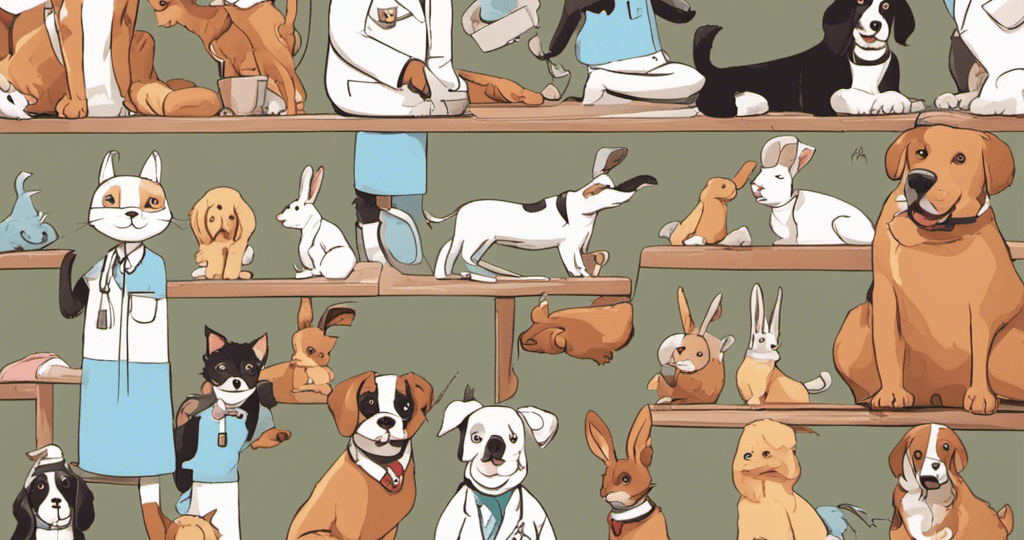Hello animal lovers! Do you own a pet or do you consider adopting/buying one? Are you aware of veterinary telehealth? In other words, do you know that your furry “kid” can have virtual vet services?
In this fast-paced and interconnected world, technology has revolutionized various sectors, and veterinary medicine is no exception. Veterinary telehealth harnesses the power of digital communication and remote consultations to provide convenient and accessible healthcare services for your beloved veterinary telehealth world. In this article, we explore how veterinary telehealth started during the pandemic and its impact on simplifying pet healthcare.
How it started
For some people, the Covid pandemic may seem like it is far, far away, while for others, it may feel like it happened just yesterday. One thing is certain – Covid-19 was an incredibly challenging period in modern human history, and people had to tackle not only the virus itself but also all the problems it brought.
Pet medicine used to exist but it wasn’t as popular before. According to the American Veterinary Medical Association (AVMA), “veterinarians can offer clients telemedicine services as long as they have established a veterinarian-client-patient relationship (VCPR) as defined in the applicable state’s veterinary practice act.”
However, to allow veterinarians to better utilize telemedicine and address animal health needs during the pandemic, the U.S. Food and Drug Administration (FDA) temporarily put certain requirements (such as portions of the VCPR) on hold on March 24, 2020.
As a result, contact among people was reduced for both pet owners and those who raise animals for food, as they could now consult with vets remotely.
How Veterinary Telehealth Works
“Do you possess a mobile phone or a laptop? If so, then you have everything you need!
Veterinary telehealth utilizes various communication methods, such as video calls, phone calls, and messaging platforms. Pet owners can remotely connect with licensed veterinarians, discuss their concerns, and seek professional advice regarding their pet’s health and well-being.
As you can imagine, the pet owner plays a vital role in this process, as they provide crucial information, particularly about the sense of smell and touch, which the veterinarian cannot examine directly. However, through a video call, the veterinarian can assess other aspects, such as the teeth, skin, or any other relevant observations.”
How to find a licensed veterinarian online and remote?
If you are seeking ways to connect with a remote veterinarian, there are several apps available to cater to your needs. One of the most renowned and award-winning apps is Dutch, which offers various services with annual or monthly subscription plans starting at $8/month.
Another option is the app called My Furries, and by searching online, you can discover additional apps that serve similar purposes.
Benefits of Veterinary Telehealth
Convenience and Accessibility:
One of the primary advantages of veterinary telehealth is its convenience and accessibility. Pet owners can connect with veterinarians from the comfort of their homes, eliminating the need for travel and reducing stress for both pets and owners.
Timely Consultations:
Telehealth allows pet owners to seek immediate guidance and support for non-emergency concerns. Whether it’s a question about a change in behavior or dietary needs, veterinarians can offer timely advice, helping pet owners make informed decisions about their pet’s health.
Post-Operative Care and Follow-ups:
Telehealth enables veterinarians to monitor post-operative care remotely. They can assess healing progress, address concerns, and provide guidance on medication or wound care through virtual consultations. This streamlined approach reduces unnecessary visits to the clinic while ensuring proper recovery.
Behavioral Support:
Behavioral issues in pets can be challenging to address, but telehealth bridges the gap. Veterinarians can observe pet behavior remotely, offer behavioral modification strategies, and provide personalized advice to help pet owners manage and improve their pet’s behavior.
Mama Mia: How a dog Mom Mia, trained her dog using virtual services!
Mia shared her story, saying, “I had a strong desire to adopt a dog over 6 months old to avoid dealing with the puppy phase.” However, she soon realized that just like humans, dogs also have distinct personalities and peculiar traits. She decided to adopt a stray dog named Bob from Greece, but upon bringing him to Denmark, where she resides, they faced a significant problem – Bob suffered from extreme stress. He couldn’t bear being alone, even for a short period, leading to loud outbursts, crying, door-scratching, and house destruction.
As Mia’s native language is Greek, she sought help from a dog trainer in Greece. The trainer requested video recordings at various times of the day to assess the situation remotely. They then had a video call on Skype, during which the trainer provided detailed guidance and assigned them specific activities to undertake. Mia diligently recorded and sent the videos, and the trainer adjusted the activities according to their needs, discussing the progress during subsequent video calls.
With each video call, they made gradual progress, ultimately achieving their desired result. Now, Bob can stay alone without causing disturbances, and he feels calm and secure whether in the company of others or by himself.
Using “tele-training” not only saved Mia money, as trainers in Denmark charge much higher fees, but it also made the training process much more accessible and convenient for her, as she could communicate in her native language.
In What Other Cases Could Veterinary Telemedicine Help
Telemedicine can be incredibly useful and helpful in many cases. However, it’s essential to remember that it isn’t a cure-all, and we must remain vigilant and responsible for our pets. Nevertheless, there are numerous situations in which telemedicine for pets can be a lifesaver. For example:
- If your pet falls ill in the middle of the night or during the weekend when most general veterinary clinics are closed.
- If your pet experiences fear, nervousness, anxiety, or aggression during transportation or while being examined at the vet’s office.
- If you have a tricky-to-transport pet, such as a horse or a large dog.
- If you face barriers to accessing veterinary care, such as mobility issues, scheduling challenges, or transportation difficulties.
- If you live in an area where it’s challenging to obtain veterinary care.
- If you’ve struggled to get an appointment to see a vet.
- If you find it challenging to afford the cost of veterinary care for your pet.
- If you have a senior or terminally ill pet, and you wish to connect with a veterinarian online who specializes in end-of-life/hospice care, someone who can help prevent or ease your pet’s suffering or assist you in determining when it’s time to say goodbye.
- If any of the situations above resonate with you, then pet telemedicine will be a saving grace.
Are There Any Negative Points About Veterinary Telemedicine
While veterinary telehealth offers numerous benefits, it’s essential to acknowledge its limitations and potential drawbacks. Here are some negative points to consider:
Inability to Conduct Physical Examinations:
One of the significant limitations of telehealth is the inability to physically examine an animal. Hands-on examinations are crucial for diagnosing certain conditions, palpating abnormalities, and conducting specific tests that require physical contact. Without this aspect, there may be a risk of misdiagnosis or incomplete assessments.
Limited Diagnostic Capabilities:
Telehealth consultations often rely on visual observations and descriptions provided by pet owners. This can limit the veterinarian’s ability to conduct comprehensive diagnostic procedures, such as blood tests, X-rays, or ultrasounds. Diagnostic accuracy may be compromised, potentially leading to delayed or incorrect treatment plans.
Technological Limitations:
The effectiveness of telehealth consultations relies heavily on reliable internet connectivity and suitable technological devices. Poor internet connections, low-quality video calls, or technical glitches can hinder effective communication and compromise the quality of care provided. Not all pet owners may have access to the necessary technology, which can create disparities in accessing telehealth services.
Emergency Situations:
Telehealth is not suitable for handling emergency situations that require immediate, hands-on intervention. In critical cases such as severe injuries, acute illnesses, or life-threatening conditions, time is of the essence, and immediate in-person veterinary care is necessary. Relying solely on telehealth services during emergencies can delay potentially life-saving treatment. Once again, the pet owner bears a great responsibility.
Lack of Personal Interaction:
Telehealth consultations lack the personal interaction between veterinarians and pet owners that can often provide valuable insights. In-person visits allow veterinarians to build a rapport with both pets and their owners, enabling them to develop a deeper understanding of the pet’s overall well-being and lifestyle. Remember the law we referred to a few paragraphs above about the veterinarian-client-patient relationship (VCPR).
It’s important to note that while these negative points exist, veterinary telehealth should be viewed as a complementary tool to traditional in-person veterinary care. Veterinarians can evaluate each case individually and determine the most appropriate course of action, balancing the benefits of telehealth with the need for hands-on care when necessary.
Conclusion
The COVID-19 pandemic served as a catalyst for the rapid adoption of veterinary telehealth, revolutionizing pet care. This innovative approach has provided pet owners with convenient access to professional advice and support, improving the overall well-being of their furry companions. As we move forward, veterinary telehealth will continue to evolve and enhance the pet healthcare experience, offering a convenient and accessible alternative to traditional veterinary visits.
Pet telemedicine is here to stay and this is indisputable. To be specific, the global veterinary telehealth market was valued at $119.6 million in 2021 and the U.S. veterinary telehealth market is expected to reach $546.8 million by 2030.
A new era has begun!




